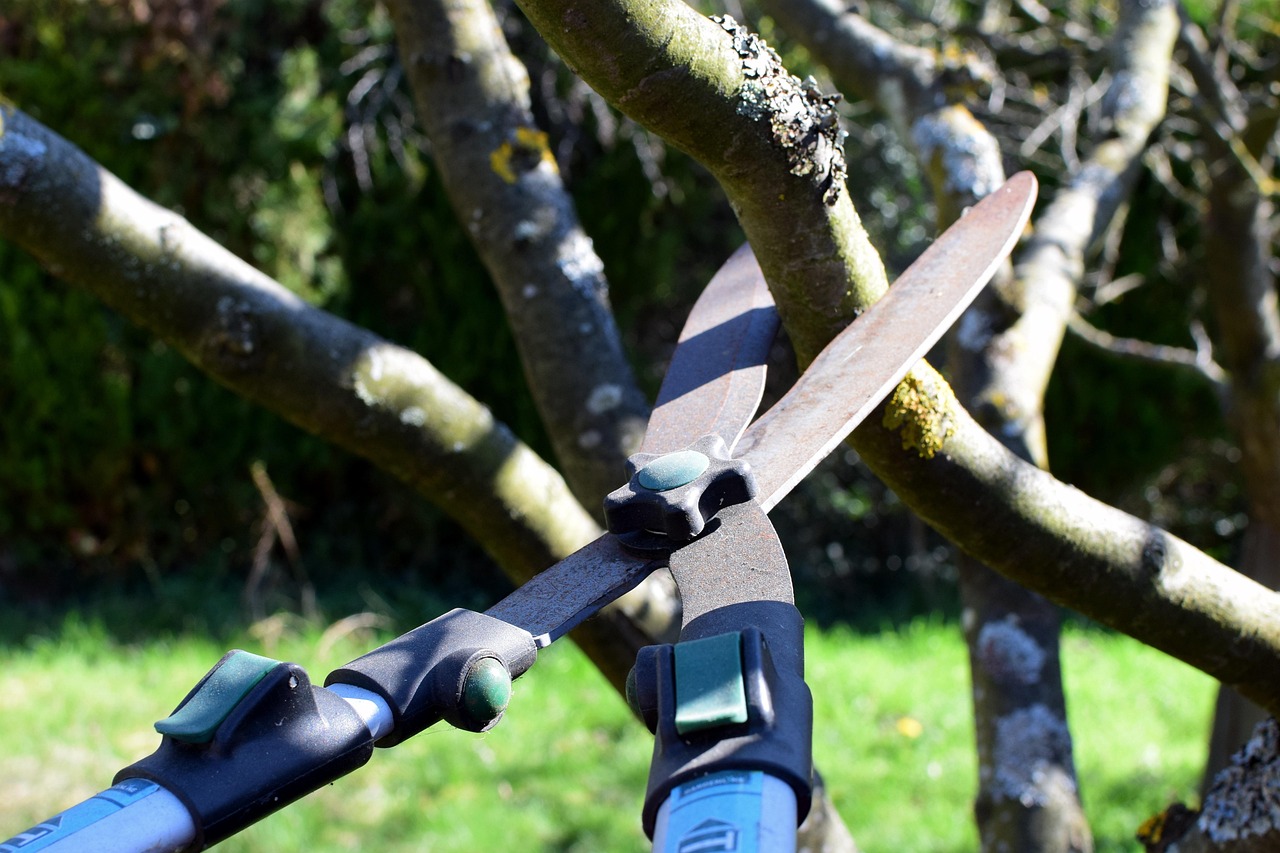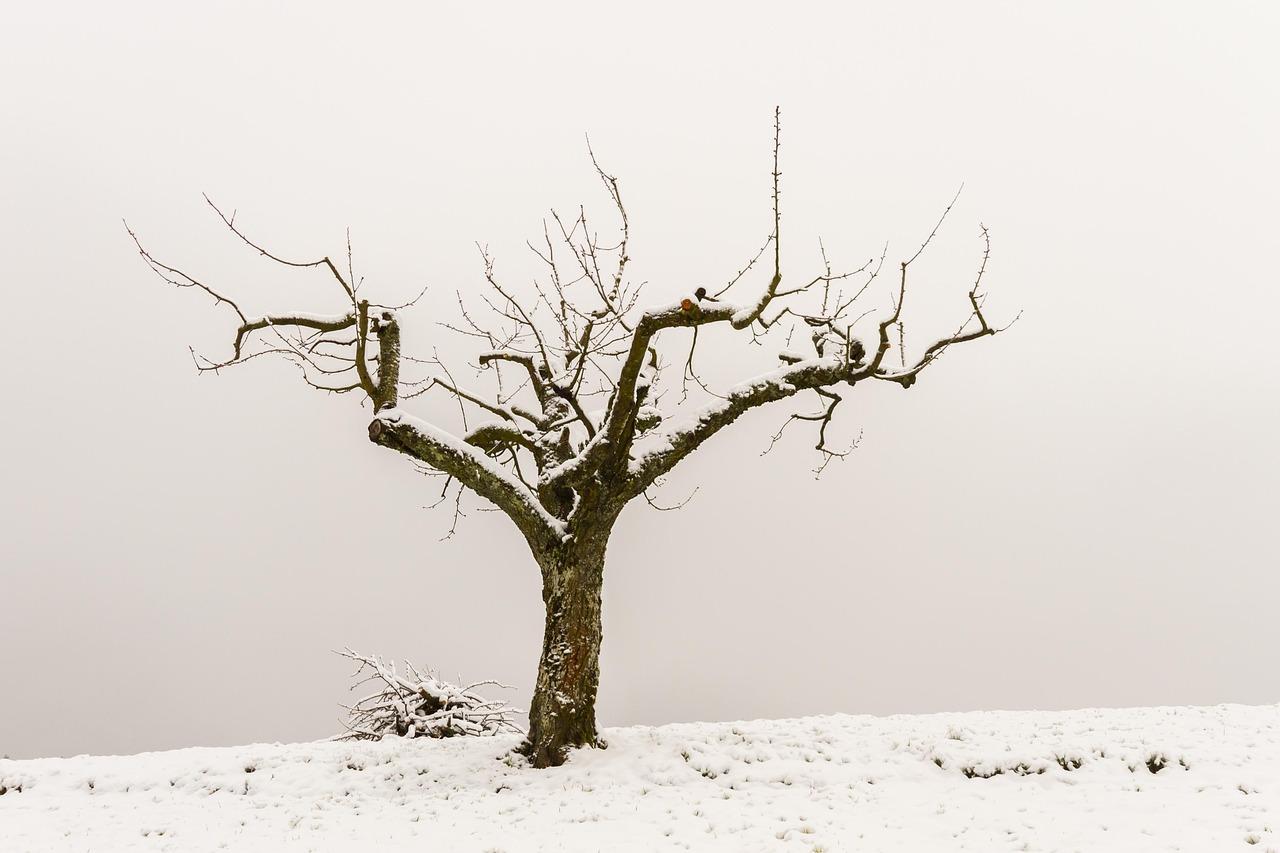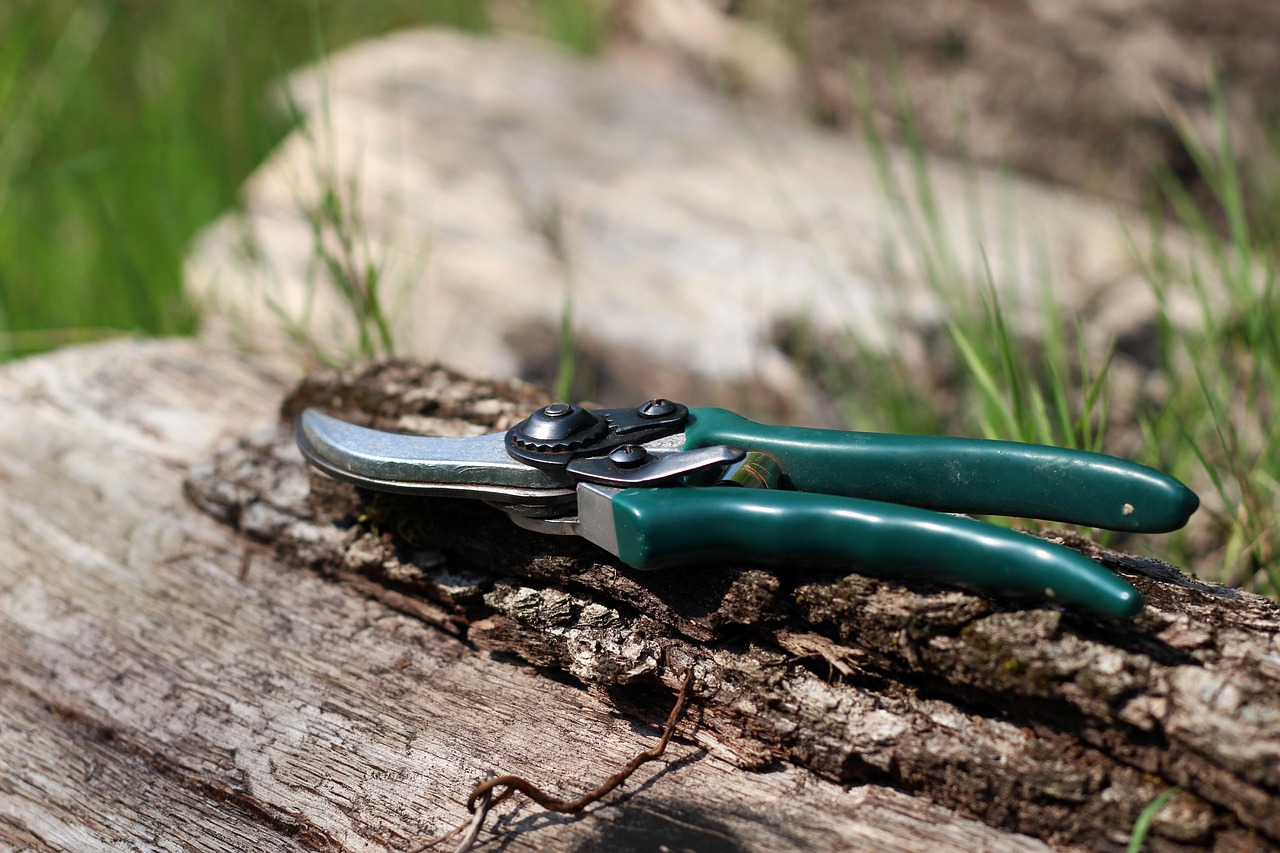Tree pruning is essential for maintaining the health and beauty of your trees throughout the year. It promotes growth, removes dead or diseased branches, and enhances the tree’s structure. Regular pruning ensures trees thrive in their environment and can prevent safety hazards.
Tree pruning is a crucial aspect of landscape maintenance. It helps to shape trees and encourages healthy growth. By removing unwanted branches, pruning allows sunlight to reach the inner parts of the tree, promoting better air circulation and reducing the risk of disease. Moreover, proper pruning can enhance the aesthetic appeal of your landscape, making it more visually pleasing.

Understanding the best practices for tree pruning can significantly impact your plants’ long-term health. Different types of trees require various pruning techniques and timing. It is essential to be informed about the appropriate tools, methods, and schedules for effective tree care. Below are some key facts about tree pruning:
| Aspect | Details |
|---|---|
| Best Time to Prune | Late winter to early spring, before new growth begins. |
| Tools Needed | Pruning shears, loppers, saws, and gloves. |
| Benefits of Pruning | Improves tree health, encourages growth, and enhances appearance. |
| Common Mistakes | Over-pruning, improper cuts, and neglecting safety. |
Essential Tree Pruning Techniques
When it comes to tree pruning, certain techniques can yield better results. Knowing when and how to prune is vital. Here are some essential techniques to consider:
- Thinning: This technique involves selectively removing branches to improve light penetration and air circulation within the tree.
- Heading: Heading involves cutting back branches to a bud or lateral branch. This method encourages new growth and can help control the size of the tree.
- Reduction: This technique reduces the height or spread of a tree while maintaining its natural shape.
- Cleaning: Cleaning involves removing dead, damaged, or diseased branches to maintain the tree’s overall health.
Understanding these techniques can help you make informed decisions when caring for your trees. Each technique serves a specific purpose and is suited for different situations. Selecting the right method depends on the type of tree and its specific needs.

Additionally, it is essential to be aware of the signs that indicate a tree may need pruning. Look for branches that are crossing each other, dead or broken limbs, and any signs of disease or insect infestation. Regular monitoring of your trees will help you identify these issues early, ensuring timely intervention.
Seasonal Pruning Considerations
Different seasons offer unique opportunities and challenges for tree pruning. Understanding these seasonal considerations can enhance your pruning strategy.
Winter Pruning
Winter is often regarded as an ideal time for pruning many types of trees. During this dormant season, trees focus their energy on root growth rather than foliage. This makes it easier to see the tree’s structure without leaves obstructing your view.

Spring Pruning
Spring is a critical time for pruning flowering trees. For those that bloom in late spring or early summer, pruning should occur after they flower. This timing allows you to enjoy their blooms while still maintaining their health.
Summer Pruning
Summer pruning is usually focused on light trimming. It’s ideal for controlling growth and maintaining the shape of trees that have already bloomed. Be cautious not to remove too much foliage during this time as it can stress the tree.
Fall Pruning
Fall is typically not recommended for major pruning activities. However, light cleaning can be performed to remove dead or diseased branches before winter sets in. This helps reduce the risk of disease spreading during colder months.

In summary, understanding the seasonal aspects of tree pruning will allow you to develop a comprehensive maintenance plan. Each season presents unique opportunities for addressing specific needs in your trees’ growth cycles. By aligning your pruning activities with the seasons, you can ensure your trees remain healthy all year long.
Tools and Equipment for Effective Pruning
Having the right tools is essential for successful tree pruning. Using proper equipment not only makes the job easier but also helps ensure that cuts are clean and effective. Below are some of the most common tools used for tree pruning:
- Hand Pruners: Ideal for small branches, hand pruners are perfect for making precise cuts on live stems.
- Loppers: These are larger than hand pruners and are suitable for cutting branches that are up to 2 inches in diameter.
- Pruning Saws: For thicker branches, a pruning saw can efficiently cut through wood with minimal effort.
- Chainsaws: For larger trees or heavy-duty pruning tasks, a chainsaw is necessary. They can handle branches that are several inches thick.
- Safety Gear: Always wear gloves, goggles, and sturdy footwear to protect yourself while pruning.
Using these tools correctly is just as important as having them. Make sure to keep all cutting tools sharp and clean to ensure the best results. Dull tools can damage branches and make it harder for trees to heal.
Pruning Techniques for Different Tree Types
Different types of trees require specific pruning techniques. Understanding these differences can help you maintain the health and aesthetics of each tree in your landscape. Here are some general guidelines for pruning several common tree types:
Deciduous Trees
Deciduous trees lose their leaves in winter. It is best to prune them during their dormant season, usually late winter or early spring. When pruning:
- Focus on removing dead or diseased branches first.
- Thin out crowded areas to enhance air circulation and light penetration.
- Aim for a balanced shape by selectively shortening overgrown branches.
Evergreen Trees
Evergreens retain their foliage year-round. Pruning should typically occur in late spring or early summer after new growth has emerged. Key tips include:
- Avoid heavy pruning, as evergreens do not regenerate as quickly as deciduous trees.
- Remove dead or damaged branches at any time of the year.
- For shaping, prune back to a healthy bud to encourage new growth.
Flowering Trees
Flowering trees can be divided into two categories: those that bloom in spring and those that bloom in summer. Follow these guidelines:
- Spring Bloomers: Prune these trees after they have finished blooming to avoid cutting off future flowers.
- Summer Bloomers: Prune in late winter or early spring before new growth appears. This helps promote healthier blooms in the summer.
Common Mistakes to Avoid When Pruning
Even seasoned gardeners can make mistakes while pruning. Here are some common pitfalls to watch out for:
- Over-pruning: Removing too much foliage can stress a tree and hinder its growth.
- Improper Cuts: Always make clean cuts at a proper angle. Jagged cuts can lead to disease.
- Ignoring Tree Structure: Pruning without considering the natural shape of the tree can result in an unbalanced appearance.
- Neglecting Safety: Failing to use appropriate safety gear can lead to injuries.
Avoiding these mistakes will enhance your tree’s health and appearance, ensuring it thrives for years to come.
Signs Your Trees Need Pruning
Recognizing when your trees need pruning is crucial for maintaining their health. Here are some signs that indicate it’s time to take action:
- Dead or Dying Branches: If branches appear lifeless or brittle, they should be removed immediately.
- Crowded Growth: If branches are crossing or rubbing against each other, thinning is necessary to prevent damage.
- Pest Infestations or Diseases: Look for signs of infestation or disease, such as discolored leaves or unusual growths.
- Unbalanced Shape: A tree that has grown unevenly may require pruning to restore its natural shape.
If you observe any of these signs, it is essential to prune promptly to prevent further issues. Regular maintenance will keep your trees healthy and beautiful throughout the seasons.
The Importance of Cleanup After Pruning
Cleansing your work area after pruning is vital for maintaining the health of your trees and your landscape. Here are some reasons why cleanup is necessary:
- Disease Prevention: Removing cut branches and debris helps prevent the spread of diseases that may affect your trees.
- Aesthetic Appeal: A clean yard looks well-maintained, enhancing the overall beauty of your property.
- Pest Control: Fallen branches can attract pests, so it is crucial to dispose of them properly.
Make sure to collect all cuttings and dispose of them responsibly. You may consider composting healthy branches or contacting your local waste management service for larger debris removal.
Understanding Tree Growth Patterns
To effectively prune trees, it is essential to understand their growth patterns. Trees grow in specific ways depending on their species, age, and environmental conditions. Recognizing these patterns will help you make informed pruning decisions.
Growth Stages of Trees
Trees generally go through several growth stages, each requiring different care:
- Juvenile Stage: During this stage, trees focus on establishing their roots and gaining height. Pruning should be minimal but can include shaping to encourage a strong structure.
- Young Adult Stage: At this point, trees are actively growing. Pruning should aim to promote a balanced canopy and remove any weak or crossing branches.
- Mature Stage: Mature trees may need regular maintenance pruning to manage size and remove dead or diseased wood. This stage is crucial for preserving tree health.
- Declining Stage: Older trees may become less vigorous. Pruning focuses on removing dead branches and improving overall health without stressing the tree.
Understanding these growth stages helps you tailor your pruning techniques to meet the specific needs of each tree at different life phases.
Best Practices for Pruning Techniques
Implementing best practices in your pruning techniques ensures that you achieve optimal results while minimizing harm to the tree. Here are some best practices to follow:
- Make Clean Cuts: Use sharp tools to make clean cuts. This helps the tree heal faster and reduces the risk of infection.
- Prune in Moderation: Avoid removing more than 25% of a tree’s foliage in one season. Over-pruning can weaken the tree.
- Aim for Natural Shape: Maintain the natural shape of the tree when shaping it through pruning. This allows for better growth and a more aesthetically pleasing appearance.
- Utilize Proper Angles: Cut at a slight angle, about 45 degrees, to promote water runoff and prevent rot.
- Seal Large Cuts: For larger cuts, consider using a sealant to protect against pests and disease, especially on younger trees.
Following these best practices can lead to healthier trees and a more attractive landscape.
Pruning for Safety and Health
Tree pruning is not only about aesthetics; it also plays a critical role in safety and health. Here are ways pruning contributes to both:
Safety Considerations
Overgrown branches can pose a safety risk. Here are some safety-related pruning tips:
- Remove Hazardous Branches: Cut back branches that are too close to power lines or structures to prevent potential hazards.
- Inspect Trees After Storms: After severe weather events, check for broken branches that could fall and cause injury or damage.
- Create Clearance: Ensure that branches do not obstruct walkways or driveways, providing clear access for pedestrians and vehicles.
Health Considerations
Pruning can enhance tree health by addressing various issues:
- Promote Airflow: Thinning out dense foliage improves airflow, reducing the risk of fungal diseases.
- Limit Pest Infestations: Removing diseased or infested branches can prevent pests from spreading throughout the tree.
- Encourage New Growth: Properly timed pruning stimulates new growth, helping trees recover from stress and thrive.
Seasonal Care for Specific Tree Types
Certain tree species have unique seasonal care requirements. Understanding these requirements allows for tailored pruning strategies that align with each species’ needs.
Bare-Root Trees
Bare-root trees require careful handling during planting and initial pruning. Here are some tips:
- Prune Before Planting: Trim back roots and branches slightly before planting to stimulate new growth.
- Timing is Key: Plant bare-root trees in late winter or early spring while they are still dormant for the best results.
Tropical Trees
Tropical trees may require a different approach due to their growth patterns. Consider the following:
- Avoid Heavy Pruning in Fall: Prune tropical trees during their active growing season to minimize stress.
- Focus on Shape Maintenance: Regularly shape tropical trees to control their size and promote healthy growth.
Northern vs. Southern Species
The climatic differences between northern and southern regions affect tree care:
- Northern Species: These trees often require winter pruning to encourage healthy growth once spring arrives.
- Southern Species: Pruning is best done in late spring or early summer when these trees are actively growing.
Catering your pruning practices to specific tree types ensures that each tree receives the care it needs based on its unique growing conditions and requirements.
The Role of Professional Arborists
If you’re uncertain about your ability to prune effectively or if your tree requires extensive work, hiring a professional arborist can be beneficial. Here are some advantages of consulting with an expert:
- Expert Knowledge: Arborists can provide insights into the specific needs of your trees based on species and health status.
- Safety Expertise: Professionals have the training and equipment to handle large or hazardous trees safely.
- Long-Term Care Plans: Arborists can create maintenance plans tailored to your landscape’s unique needs, ensuring ongoing health and vitality.
Investing in professional services can save time and ensure that your trees receive the best possible care, contributing to their longevity and beauty in your landscape.
Additional Considerations for Tree Pruning
Beyond the basic techniques and timing for pruning, several additional considerations can enhance your approach to tree maintenance. These factors can help ensure that your efforts yield the best results for your trees and landscape.
Understanding Tree Biology
Knowledge of tree biology can significantly influence how you prune. Trees are living organisms that respond to pruning in various ways:
- Growth Hormones: Trees produce growth hormones that influence how they grow. Pruning can redirect these hormones, promoting growth in desired areas.
- Wound Response: Trees have a natural ability to heal wounds. Understanding how trees respond to cuts can help you make better pruning decisions.
- Species-Specific Responses: Different species may react differently to pruning. Researching specific needs can tailor your approach effectively.
Environmental Factors
Consider the environmental conditions surrounding your trees. Factors such as soil quality, moisture levels, and sunlight can impact how trees grow and respond to pruning:
- Soil Quality: Healthy soil contributes to overall tree health. Ensure that trees receive adequate nutrients to support recovery after pruning.
- Watering Practices: Proper watering before and after pruning is crucial. Avoid overwatering, but ensure trees are not stressed from drought.
- Sunlight Exposure: Trees need proper sunlight for optimal growth. Pruning can help manage canopy density to allow light penetration.
Seasonal Weather Impacts
The weather can greatly affect the timing and success of pruning efforts. Here are some seasonal impacts to consider:
- Late Frosts: In spring, late frosts can damage new growth. Pruning should be timed carefully to avoid exposing new shoots to frost damage.
- Dry Seasons: During hot, dry spells, trees may become stressed. Pruning during these times should be minimal to avoid adding stress.
- Rainy Seasons: Wet conditions can lead to higher risks of disease transmission through cuts. Avoid pruning when conditions are excessively wet.
Community Resources for Tree Care
Many communities offer resources to assist homeowners with tree care. Utilizing local resources can provide valuable support:
- Local Extension Services: Many regions have agricultural extension services that offer guidance on tree care specific to local conditions.
- Community Workshops: Look for workshops on tree care and pruning offered by local gardening clubs or community centers.
- Online Resources: Websites and online forums dedicated to horticulture can provide tips, guides, and community support.
Engaging with local resources not only enhances your knowledge but can also connect you with fellow gardening enthusiasts who share similar interests.
Final Thoughts
Tree pruning is an essential aspect of maintaining the health, safety, and beauty of your landscape. By understanding the different techniques, seasonal considerations, and tree biology, you can ensure that your trees thrive year-round. Regular maintenance, proper tools, and knowledge of specific tree needs will empower you as a gardener.
Engaging with professionals when necessary adds another layer of safety and expertise to your efforts. Whether you’re a novice gardener or an experienced horticulturist, continuous learning about tree care is vital for fostering a thriving environment.
Ultimately, investing time and effort into tree pruning will not only enhance the beauty of your property but will also contribute to a healthier ecosystem. Your trees will reward you with shade, beauty, and enjoyment for many years to come.
Remember that every tree is unique, and adapting your approach based on its specific needs will yield the best results. Happy pruning!
